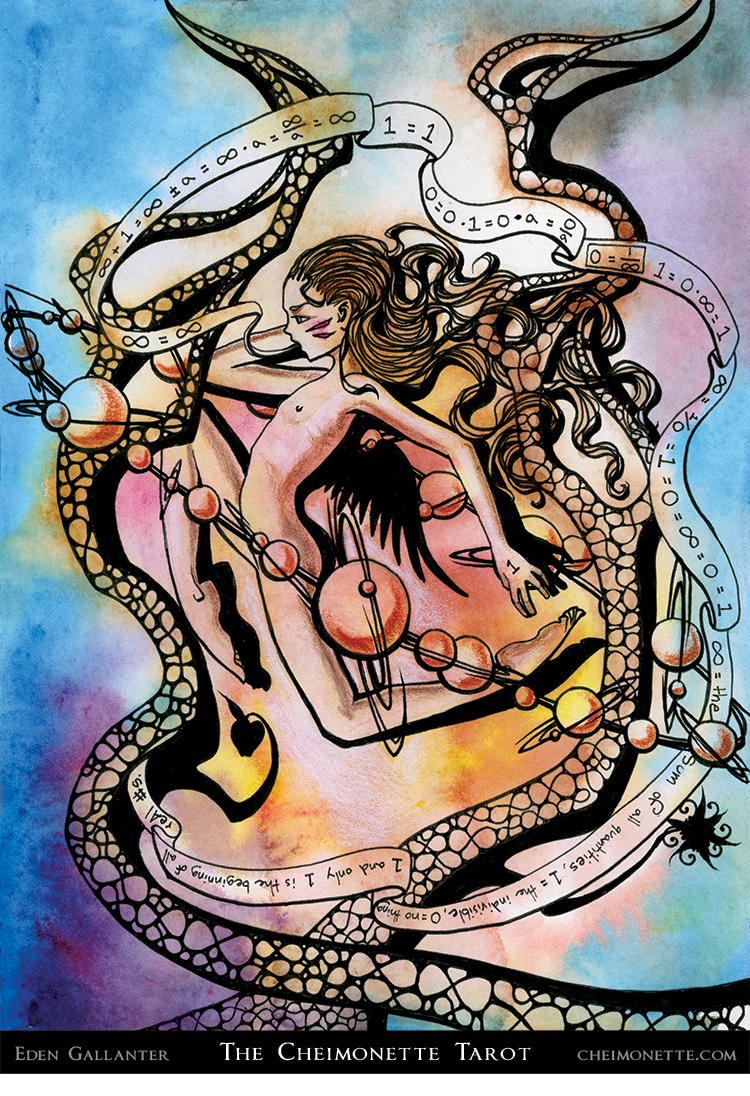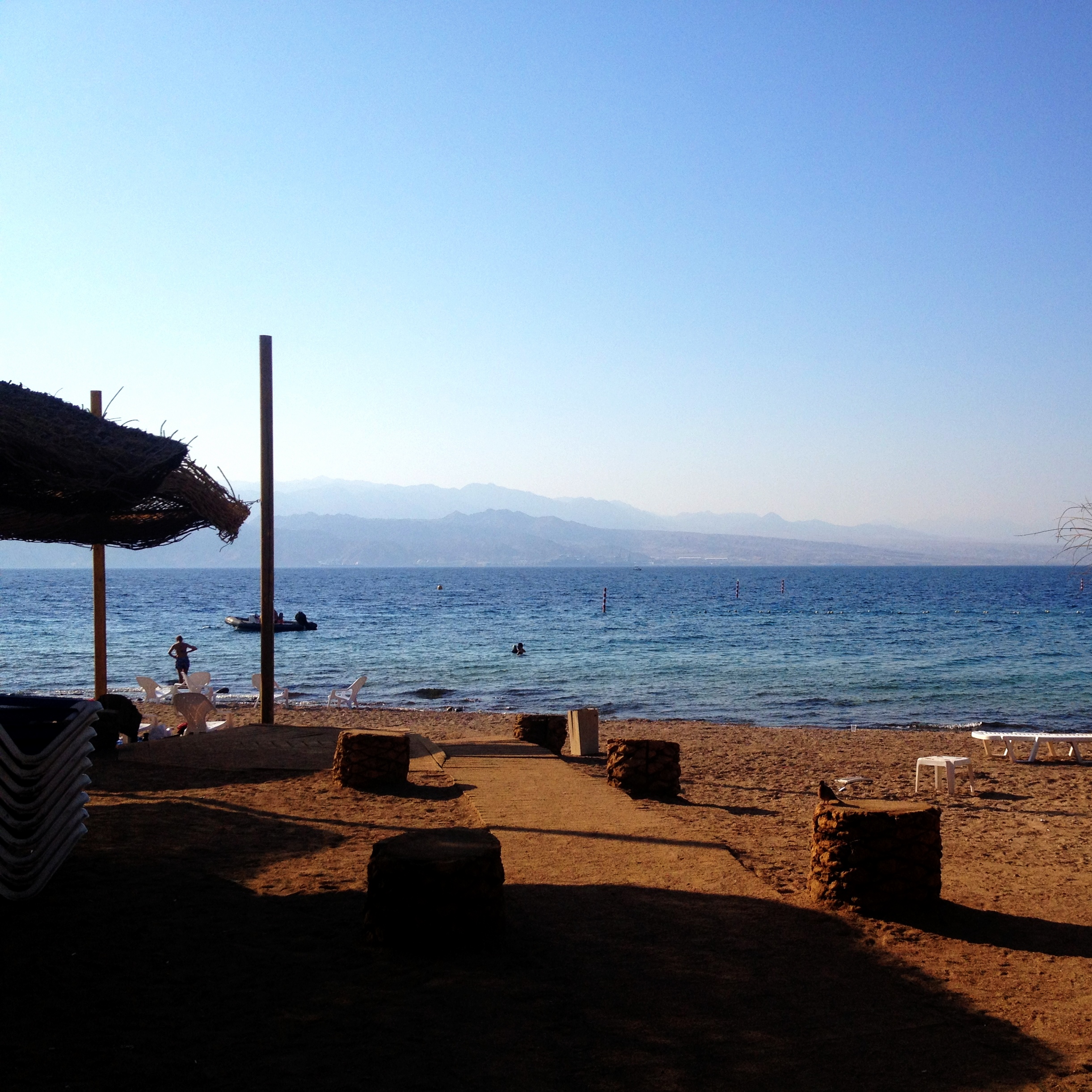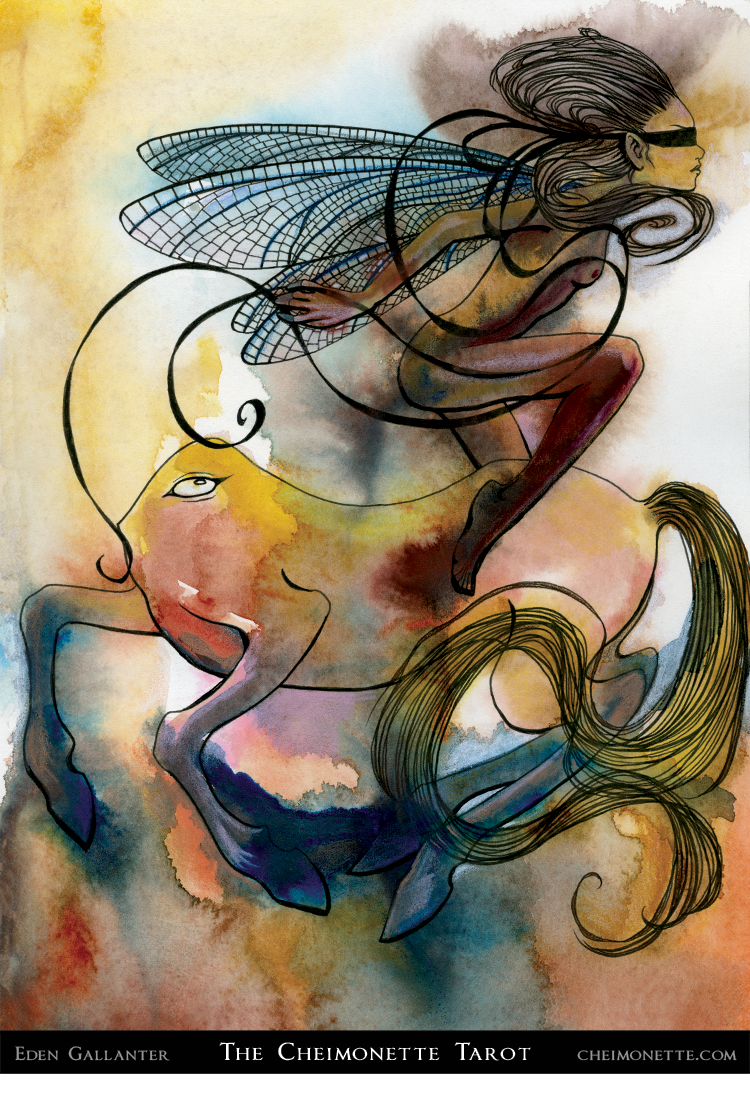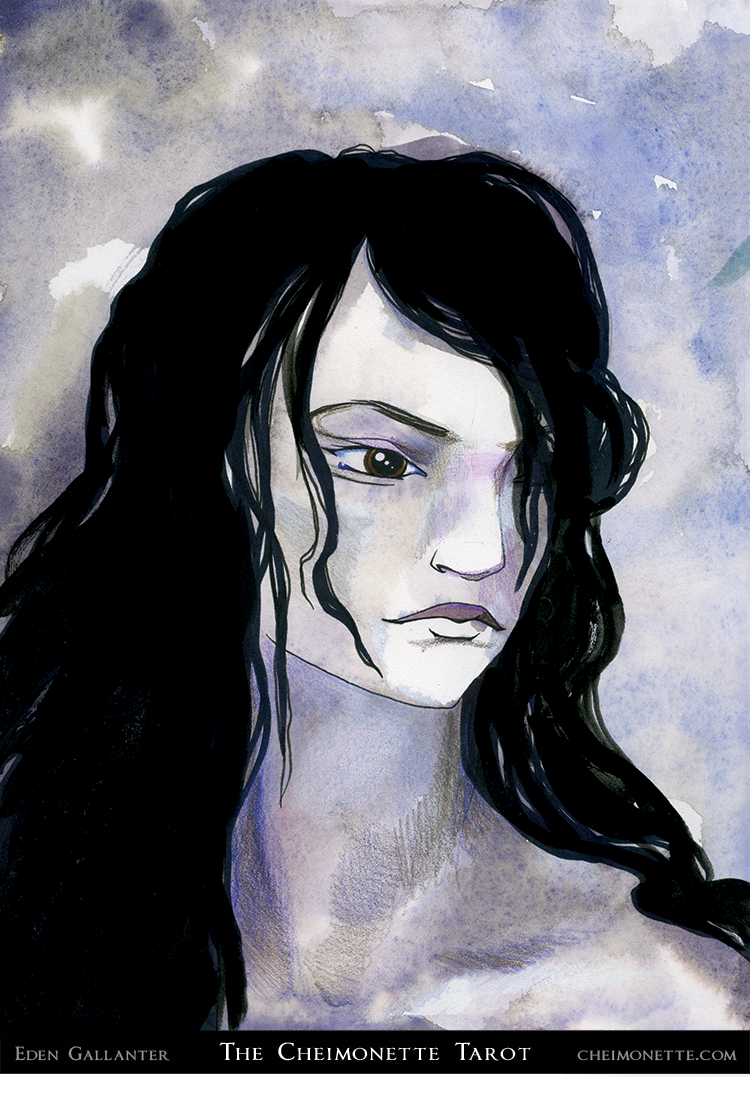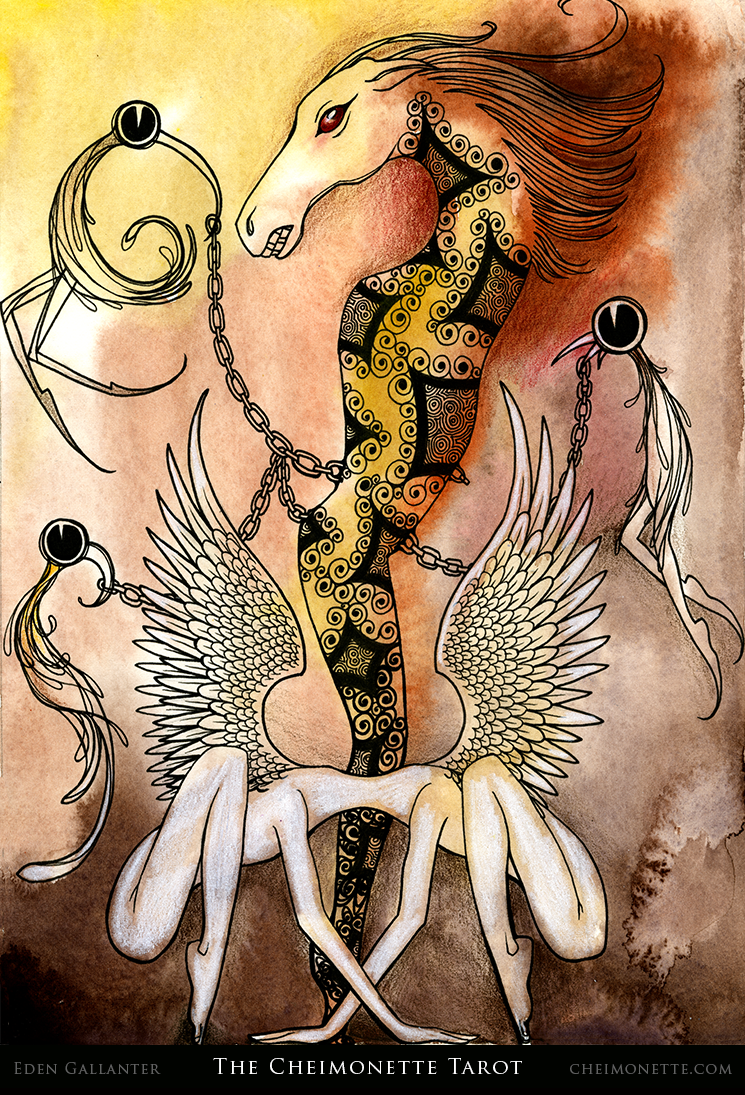The End of the World
The end of the night is a little like the end of the world sometimes, when you wake up from your dream or your nightmare, when you wake up from the daze of love and find you were in love with a ghost, when you realize that you've been working for eight hours straight in the dim shadows of the early dawn. It's over. Ready or not. Lately, I’ve been pulling a lot of late nights and all-nights, working on my paintings and writing, deep in the wonderful trance that artwork and writing generate, and nothing else exists for a while. Next to my art table, I’ve got a few prints of Mondrian’s trees, and I like to look up at them sometimes, while I work.
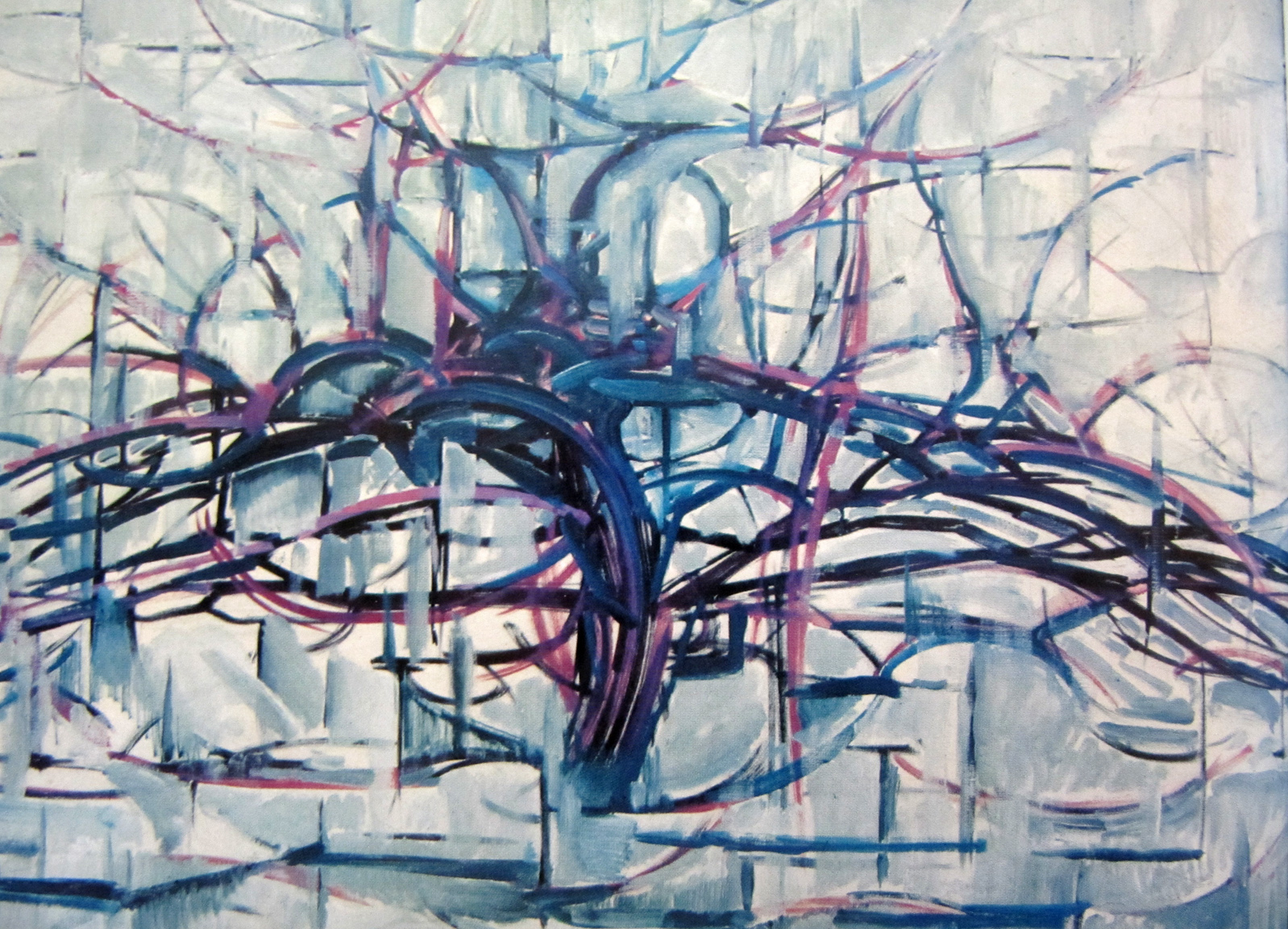 If you’re thinking “Trees? Wasn’t Mondrian that guy who exclusively painted rectangles in primary colors?” then you’re in for a treat: Mondrian’s early work was startlingly different from his later obsession with rectangles. If you follow the early work (the trees in particular) chronologically, you can see how he got into geometry. He is clearly preoccupied by the way the trees divide and fracture the sky behind them. The spaces between the branches become more and more dominant until they swallow up everything else.
If you’re thinking “Trees? Wasn’t Mondrian that guy who exclusively painted rectangles in primary colors?” then you’re in for a treat: Mondrian’s early work was startlingly different from his later obsession with rectangles. If you follow the early work (the trees in particular) chronologically, you can see how he got into geometry. He is clearly preoccupied by the way the trees divide and fracture the sky behind them. The spaces between the branches become more and more dominant until they swallow up everything else.
In the end, Mondrian throws out everything but the math and the primary colors: elementary particles of the world of the artist.
Ten years ago, I painted the last of the major arcana cards, The World. At the time, I was mad about abstract mathematics (not that I’m not still, I simply have learned to be less heavy-handed about it). I was just
beginning the process of designing and painting my tarot cards, and I was still having trouble figuring out a method. My head was always a confusing tumult of images and ideas, and I usually didn’t know how they would fit together until I put it all down on paper. I would sometimes go through four or five unsatisfactory card paintings until I got it right (energetically tearing up an unacceptable card, catharsis suffusing me with each shred of paper that fell to the floor). I was in the process of teaching myself how to use watercolors. I had never done a large-scale art project before. So, there was a great deal of trial and error, but by the time I had gotten to the World card, I had refined my process to a gracefully attenuated point.
As much as I was inclined towards the final card of the tarot’s major arcana, I found (and still find) the World a challenging card to interpret. After all, it is a word that is meant to encompass everything. Where are we even supposed to begin? Going through the knucklehead prehistory of our current understanding of the universe is of little assistance. Both the Rider-Waite and Thoth images of the World are symbolic representations of the human experience (which, actually, is what all the science we have on the subject amounts to as well), so I decided to begin with us—specifically, with the foundations of identity: our place within our environment. As the Fool is a blank card, depicting an entire lack of experience or identity (and the Angel is the Fool’s transformation from an empty vessel into a divine being), the World must be about the acquisition of a self, and of a relationship with the universe outside the self.
The first version of the World was made of math: two trees composed of infinity signs (and whose shadows reveal them to be the Trees of Life and Knowledge), with a child in the space between them (demarcated as human and therefore finite by the “1” inscribed on her hand), orbited by a cluster of zeroes or planetary bodies. This is one story of the original bitten apple: how our species acquired almost godlike powers of understanding and control over our environment (though, as anyone can see, without any of godlike powers of foresight which comes along with the dubious ability to live indefinitely).
Which brings us (somehow, but you’ll see, just you wait) to a tiny little jewel of a poem by ee cummings, from his book “95 Poems”.
wild(at our first) beasts uttered human words —our second coming made stones sing like birds— but o the starhushed silence which our third’s
Within the jumbled flavors of human evolution, religion, sound, and sex, the poem has always seemed to be about the arc of creation and destruction. Language, technology, and a strange cosmological quiescence at the end: the human body, the human race, the planet, and the whole universe will ultimately destroy itself, much in the same fashion in which, in the beginning, it created itself.
I did not have a clear notion of this when I painted my first version of the World (beasts uttered human words) back in 2004, but the velvety black shadows of the trees and the fury of the child between them seem to me to
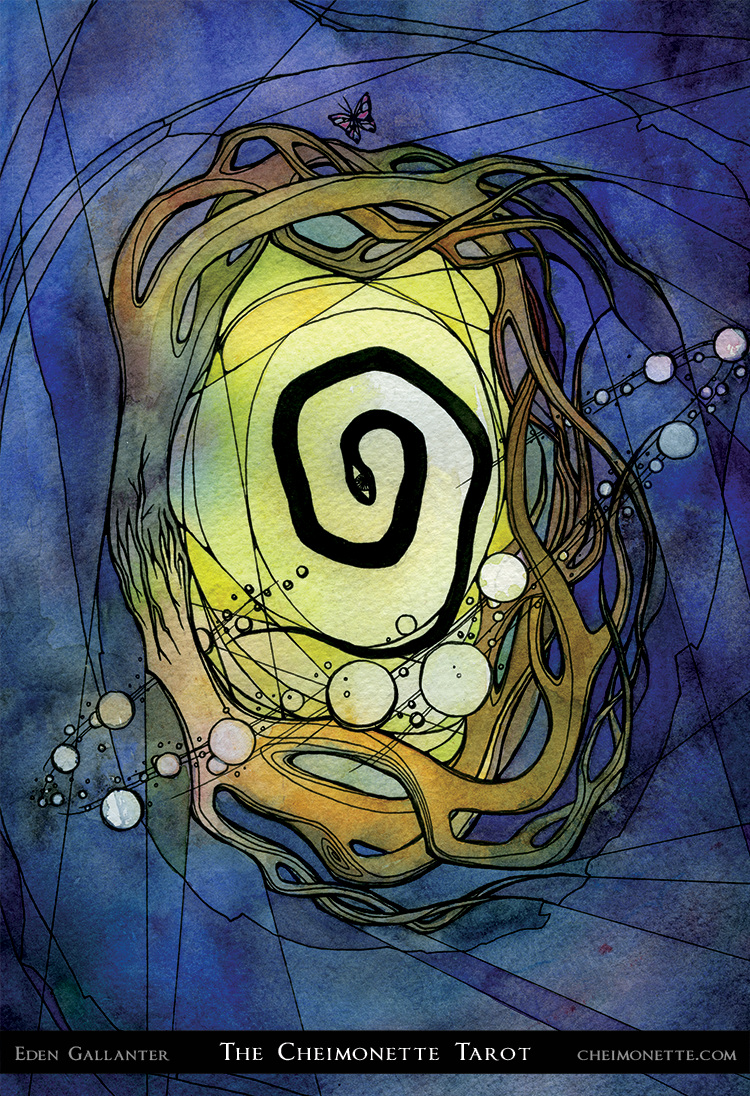
portend the last two versions, which I painted only in recent months (each painted all at once, in two
isolated all-night electrical storms of artistic energy).
The second World (stones sing like birds) has several of the same elements: the trees and the orbital band of
planets. The human child has vanished, and in its place is a black snake (or is it a serpentine hold in the fabric of the universe, through which the great eye of some god or monster shines?) The moth of the swords
suit (the same moth first introduced in the clothing of the pregnant, masked figure in Death) hovers above the trees, whose roots and branch tips intermingle in a

continuous ring. In the third World (but o the starhushed
silence), the trees are replaced by golden serpents (a duplicate version of the
serpent, eating its own tail, a representation of a primordial and eternal unity). The death
moth has vanished, and no central figure exists between the trees and their orbiting
planetary belt.
What began as a human child and transformed into a black serpent with a human eye has ended in simple darkness, as though it is an open portal into some other world, brand-new and unknown.
As though the world had already ended and nothing was left but a cloud of postexplosive, poststellar material gathering itself along the last remaining vectors of gravitational and electromagnetic forces. As though nothing was left but the mathematical principles behind the grand set of the physical laws of the universe.
The World card, last of the major arcana, is really the end of the world. Only upon the conclusion of the bigger story do we discover its meaning.
This post is part of a series about my deck, the Cheimonette Tarot.
The Kickstarter to fund its publication is currently live! Pre-order a deck or the artwork here.
